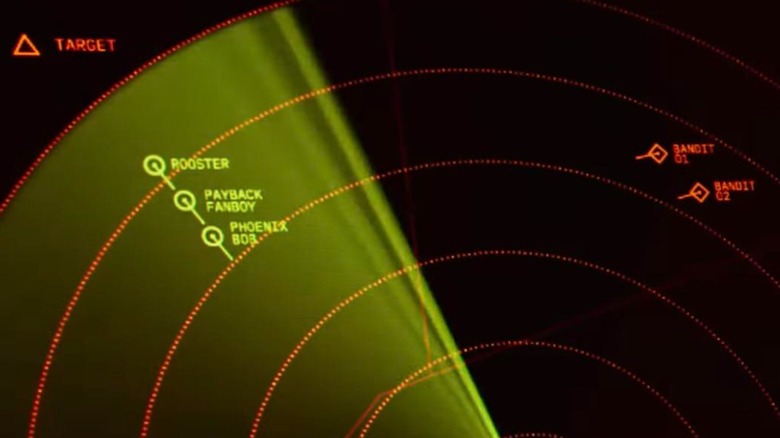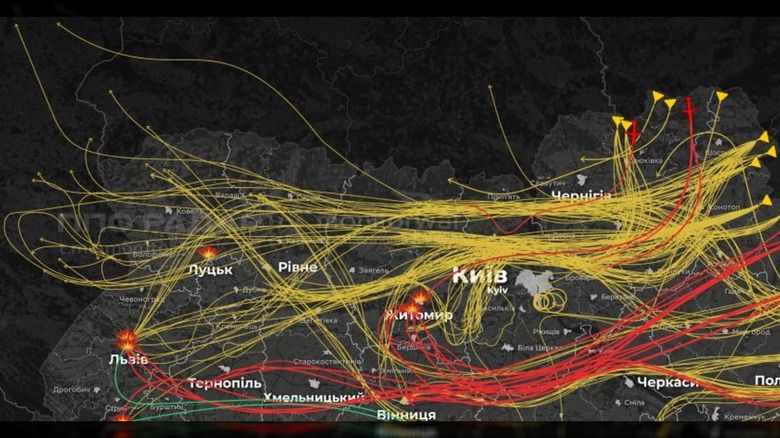What Rights Does A Country Have If A Drone Breaches Its Airspace?
Every once in a while, one nation's air asset finds its way into another country's airspace, which can be problematic. During the Cold War, it was incredibly common for the United States to send its high-flying, super-fast SR-71 Blackbird into Soviet airspace to gather intelligence, but the practice eventually gave way to satellites. However, it does still happen. In 2025, it occurred several times to NATO nations, pushing many in the West to wonder, 'Can a nation react violently when its airspace is breached?'
The answer to that question is an absolute yes — every nation has what is called air sovereignty, and it's backed up by a treaty. Air sovereignty is a country's fundamental right to govern the use of its airspace, which involves allowing passenger planes from other countries and other forms of air traffic. The primary treaty that deals with this is the 1944 Chicago Convention, known as the Convention on International Civil Aviation. It regulates what a nation can and can't do regarding its airspace, and like other treaties, it's been updated over the years as new technology arises.
In addition to the international treaty, each nation has its own laws regarding its airspace, but one thing is clear: it's not okay for one country to violate another's. In 2023, a Chinese spy balloon found its way into U.S. airspace, resulting in the first "kill" by an F-22 Raptor. In Europe, the Russo-Ukrainian War bled over into both Poland and Romania, when airspace incursions resulted in what can only be described as international incidents.
The 2023 Chinese Spy Balloon Incident
Accidental airspace incursions happen fairly often, but when it comes to highly-publicized, possibly purposeful incidents, you need look no further than the 2023 Chinese spy balloon. The incursion was first noted on January 28, 2023, and it continued until February 4. The balloon was a high-altitude vehicle that crossed much of North American airspace, including Alaska, Western Canada, and much of the continental United States. The incursion ended when an F-22 shot it down with an AIM-9X Sidewinder air-to-air missile.
China has never acknowledged the balloon's purpose and claimed that it was blown off course and into U.S. airspace, but analysts in the West are highly dubious of this claim. That said, it was confirmed that the vehicle's onboard sensors weren't active, nor did they transmit any information to China, so the claim could be truthful. The U.S. Air Force tracked the balloon with a U-2 Dragon Lady spy plane before finally deciding to shoot it out of the sky after it moved over the Atlantic Ocean.
The debris was recovered from the bottom of the ocean and analyzed to determine how much data was transmitted. While the balloon may not have collected intelligence, China certainly got a look at the U.S. response to an airspace incursion, and the event degraded U.S.-China relations. Of course, the U.S. didn't request to shoot down a Chinese asset — it did so because it has the legal right to protect its air sovereignty.
Russian incursions into NATO airspace in 2025
The Russo-Ukrainian War involves a lot of NATO allies, whose airspace is used to transport supplies, weapons, and ammunition to Ukraine, but the conflict has remained within Russia's and Ukraine's borders. Should it cross over into a neighboring NATO nation, though, larger war could erupt across Europe. Nobody wants that to happen, but Russia still violated Polish and then Romanian airspace in two separate events in a single week in September 2025.
On September 9, several Russian drones violated Polish airspace, initiating a response from NATO. Air defenses were activated and engaged the drones via Italian AWACS, Dutch F-35s, Polish F-16s, tanker transports, and German Patriots. The quick reaction showed NATO's resolve in working together to protect the airspace of its member-nations, but it resulted in the activation of Article 4. This brought in all members for consultations regarding the incident. That was the first Russian incursion into NATO airspace, but it wasn't an isolated incident.
On September 14, Romania reported that a Russian drone violated its airspace, resulting in yet another potential threat to a NATO ally. Romanian fighter jets were already in the air monitoring the drone as it flew within Ukraine's borders, but it eventually crossed over into the country's airspace. The fighters identified the drone as an Iranian-Shahed 136, which is a single-use attack drone. It didn't fly over any populated areas, but the incursion was nonetheless a second escalation, which could be accidental, but also intentional to test NATO's air defense response.


